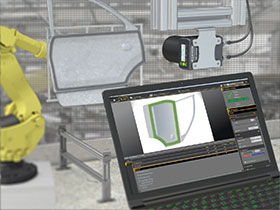

Many users find vision systems challenging and it can be difficult to know where to start, but there are some simple steps that can help to match the right vision solution to an application. This article describes four questions to ask to help clarify the application requirements.
Vision sensors and smart cameras are some of the most accessible vision technologies, especially for those just getting started with implementing vision solutions in their manufacturing processes. The following questions can help evaluate the application requirements before making a decision:
1. What is the speed of the application? It is important to verify that the vision solution is suited to the speed of the application. The more conditions that need to be inspected, the longer the inspections will take.
2. What is the distance from object to sensor? How far away from the objects will the sensor be mounted? A vision sensor should typically be mounted less than 300 mm away from the target. For further distances, a higher-end system may be required.
3. What size objects are being inspected? Make sure that the object(s) fit within the viewing window of the vision sensor. Note that vision sensors have a more limited field of view compared to more expensive vision solutions. Therefore, vision sensors work best for small parts, or assemblies with small quantities of parts. If a wider field of view is needed, a smart camera may be a better option, offering more functionality while still being easy to commission and use.
4. What conditions are being inspected? This is the question where many people struggle when getting started with vision. They know they are looking for a ‘good’ condition, but what counts as good? What are the true pass/fail requirements? For this, evaluate the tolerance for less than perfect parts. One way to do this is to find the ‘best’ bad’part and the ‘worst’ good part and set the tolerances for the sensor at both ends of the spectrum. Setting tolerances is essential for any vision application and will help ensure minimum wastage of parts and material through rejecting parts that should be considered passable – or allowing parts through that should have been rejected.
Next steps
After answering these questions, the next step is to try out a solution. Every vision application is unique, and it is best to try out the device under real-world conditions to make sure it works for the application. Finally, partner with a manufacturer that offers both vision sensors and smart cameras, which makes it simpler to upgrade if needed.
For more information contact Brandon Topham, Turck Banner,+27 11 453 2468, [email protected], www.turckbanner.co.za
| Tel: | +27 11 453 2468 |
| Email: | [email protected] |
| www: | www.turckbanner.co.za |
| Articles: | More information and articles about Turck Banner Southern Africa |

© Technews Publishing (Pty) Ltd | All Rights Reserved